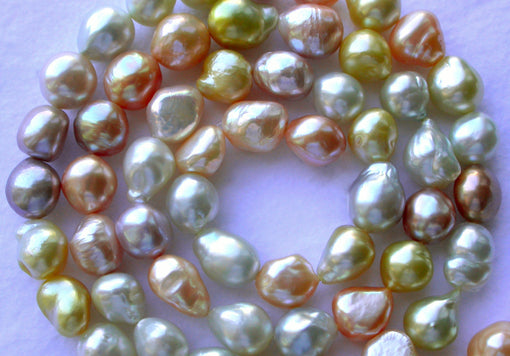
- Article published at:
- Article author: Trimi Trimi
- Article tag: About pearls
- Article comments count: 0
Drawer menu
The brightness of a pearl is one of the most important aspects in its evaluation.
A pearl with excellent luminosity gives light to the wearer making it a perfect accessory for any occasion. On the other hand, a pearl with lower luminosity stands out less when worn.
Furthermore, a well-marked luminosity brings out the colors of the pearl itself, highlighting all its nuances of colour.
There are several measurement scales to indicate the level of brightness of a pearl. We usually use a numbering from 1 to 5 where 1 is the maximum degree of brightness and 5 the least. But different scales are used commercially.
A pearl of maximum luminosity has a highly marked reflective surface. If you look closely you can see your own reflection or the reflection of the lights in the room on the surface of the pearl.
As the brightness of the pearl decreases, its reflective properties decrease until the pearl becomes completely opaque.
Pearls that have an average luminosity can sometimes appear to have a patina that envelops the surface of the pearl and does not allow it to shine.
There are also pearls that do not have a uniform luminosity along their entire surface, and therefore have a brighter part and a less luminous part. It is useful to evaluate a frame that highlights the brightest part or to think of a jewel that plays on this double luminosity.
Several factors can affect the brightness of a pearl.
We remember:
All Trimi pearls are selected with their luminosity in mind and it is one of our key criteria. The pearls purchased on our site or from authorized dealers all have a marked brightness.
In the next article we will analyze the next two classification criteria, the surface area and the degree of cultivation, stay tuned!